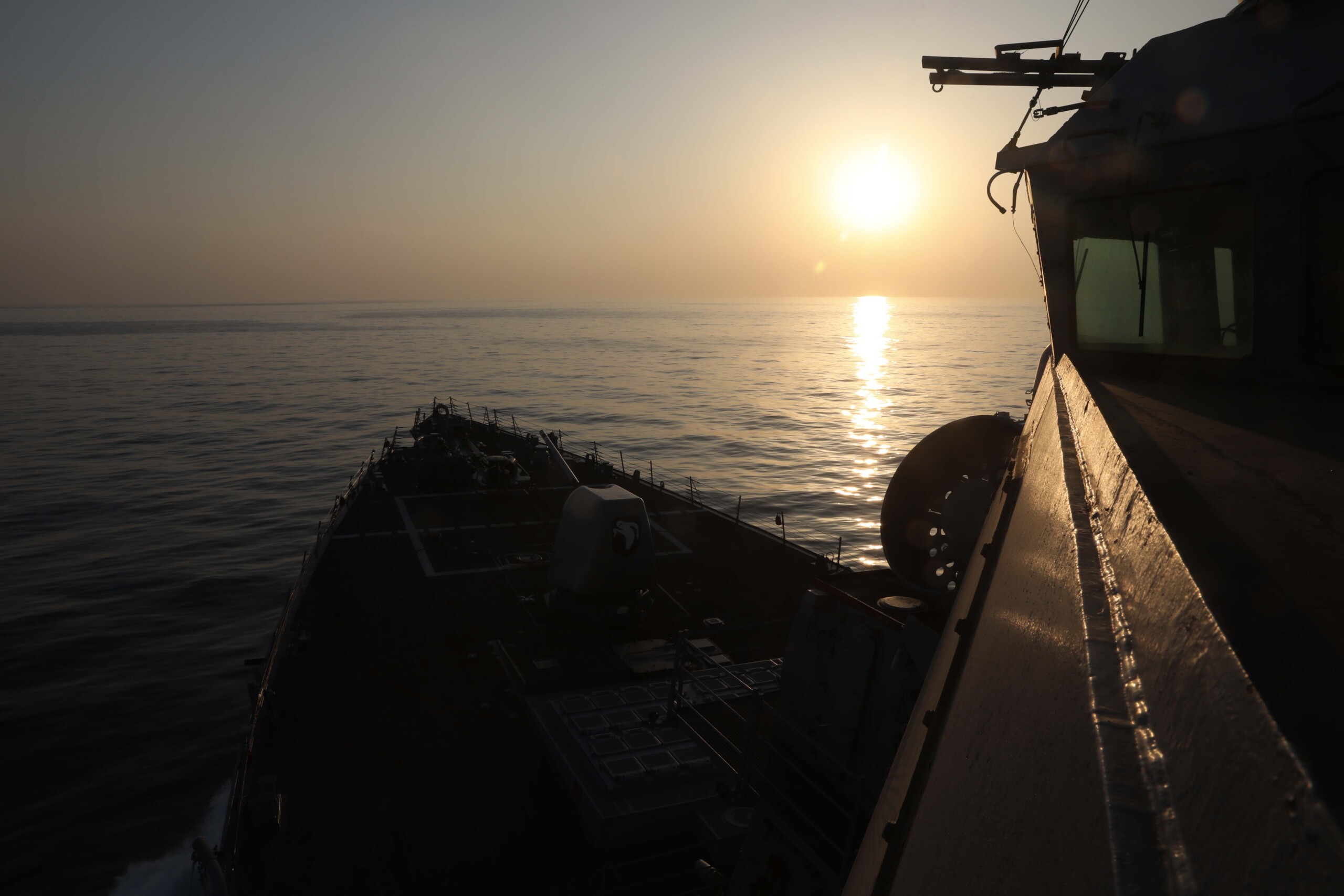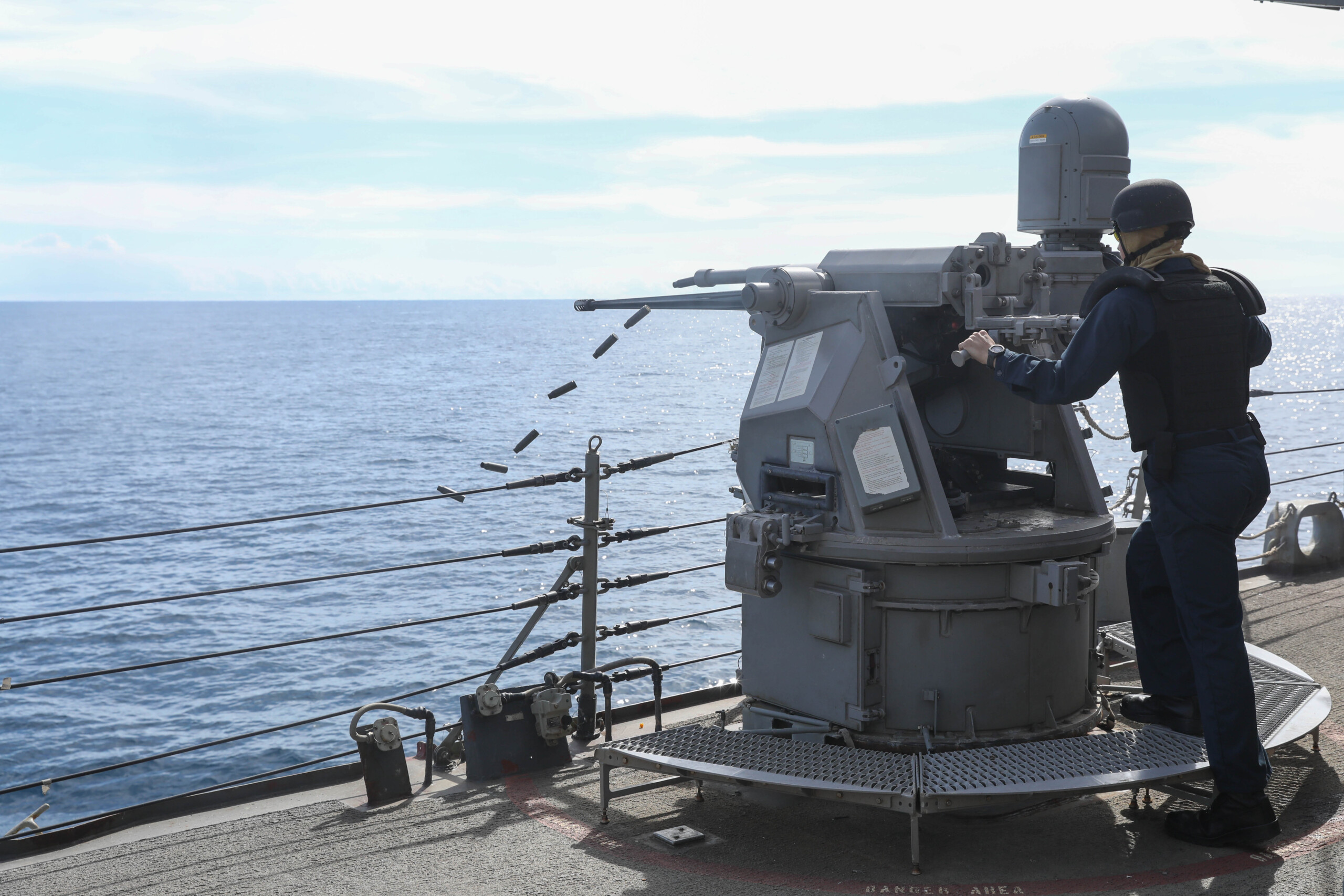The US Navy has announced that they will be extending and enhancing four Arleigh Burke-class destroyers, forging maritime excellence and strength in the ever-changing naval landscape — particularly in the Pacific.
—
Our Navy has recently taken a momentous step to amplify its capabilities and ensure the sustained operational prowess of its fleet. In a strategic move that aligns with its commitment to upholding a formidable and capable surface fleet, they have announced the extension of the service life of four Arleigh Burke-class (DDG 51) guided-missile destroyers. These vessels, stalwarts of maritime security since the 1990s, are poised to continue their vital roles for an extended duration.
The beneficiaries of this service life extension initiative encompass the USS Mitscher (DDG 57) and Ramage (DDG 61), stationed in Virginia, and the USS Benfold (DDG 65) and Milius (DDG 69), currently based in Yokosuka, Japan. These destroyers, which have safeguarded maritime interests and bolstered global security for decades, are now primed to extend their legacy.

The USS Mitscher (DDG 57) and Ramage (DDG 61) will witness an elongation of their operational lives until 2034 and 2035, respectively. The USS Benfold (DDG 65) and Milius (DDG 69) will similarly reap the benefits of this extension, with their service lives now projected to span until 2036 and 2035.
Extended Service, Enhanced Naval Power
This pivotal decision follows the March announcement to extend the service life of the class’ lead ship, the USS Arleigh Burke (DDG 51), by five years. Collectively, these extensions cumulatively contribute an impressive 23 years to the fleet’s service life, all within a mere six months. This strategic investment underscores the Navy’s steadfast dedication to upholding a robust surface warfare capability while effectively managing resources.
The driving impetus behind these extensions is to surpass the initial estimated service life of 35 years for these destroyers. In doing so, the US Navy is committed to extracting maximum operational value from each vessel, ensuring its surface fleet remains optimally equipped to fulfill missions and address evolving security challenges.
Rear Admiral Fred Pyle, the US Navy Surface Warfare Director, accentuates the significance of these service life extensions, highlighting how they underscore the Navy’s dedication to achieving the ideal balance of capacity and capability within its surface fleet. This decision carries particular weight as it aligns seamlessly with Secretary of the Navy Carlos Del Toro’s commitment to Congress during the FY-24 posture hearings. The Secretary further underscores the Navy’s commitment to meticulous analysis of service life on a hull-by-hull basis, affirming the responsible stewardship of resources invested by the American people.

Arleigh Burke-class: A Revered Destroyer
The Arleigh Burke-class, a highly advanced and versatile guided missile destroyer series, has served the US Navy since 1991. Named after WWII hero Admiral Arleigh Burke, these vessels boast the advanced Aegis combat system for multitarget tracking and engagement alongside potent weaponry like Tomahawk and Standard missiles. With a displacement of 9,200 tons, a length of 505 feet, and powered by four LM2500 gas turbines, they reach speeds exceeding 30 knots. Crewed by around 300 personnel, these destroyers feature advanced sensors, AN/SPY-1D radar, and AN/SQQ-89 sonar, facilitating diverse roles from maritime security to humanitarian missions. Over time, the class has undergone enhancements, culminating in the Flight III variant, equipped with improved radar, missile capabilities, and cutting-edge technologies. The Navy’s plan includes a total of 85 Arleigh Burke-class destroyers, slated for completion by 2041.
Aegis Upgrades and Prudent Management
Beyond the ambit of service extensions, the Navy is firmly intent on fortifying the sustained operational relevance of these illustrious destroyers through substantial enhancements to their Aegis naval combat weapons systems. Renowned for their adaptability and combat proficiency, the Arleigh Burke-class destroyers are poised to embrace these upgrades, poised to amplify their defensive and offensive capabilities, ensuring they retain their pole position in naval warfare technology. By seamlessly incorporating advanced systems into the destroyers’ Aegis systems, the Navy underscores its commitment to nurturing a credible and influential surface fleet armed to tackle various security challenges.
The feasibility of the life extension program has been greatly facilitated by the destroyer crews’ unwavering dedication to management plans spanning the entirety of the fleet’s lifecycle. This systematic and proactive approach has been instrumental in preserving these vessels’ structural integrity and operational readiness. This meticulous management approach constitutes the bedrock upon which extensions and upgrades are seamlessly integrated.

Pyle highlighted the strategic importance of these Arleigh Burke-class destroyers, emphasizing their ability to deliver the right balance of capability and capacity to operational commanders cost-effectively, furthermore asserting the service’s commitment to maximizing the return on investment for these ships and ensuring that each extension aligns with each destroyer lifecycle maintenance schedules.
An exemplar of meticulous planning is evident in the USS Mitscher and Milius extensions, where docking availability requirements have been astutely considered. The prudent allocation of resources takes center stage, as extending the service lives of these vessels by an additional year to five years would necessitate a significant portion of that extension being dedicated to docking availability. This nuanced consideration showcases the Navy’s unwavering commitment to prudent resource management, thus optimizing the deployment of resources entrusted to its guardianship.
Culminating in Excellence: A Bold Step Toward the Future of Naval Dominance
In an ever-evolving global security landscape, the US Navy’s resolute commitment is evident through its extension and enhancement of the Arleigh Burke-class destroyers’ service life. This decision cements their legacy and ushers in an era of unmatched maritime strength. With a focus on extracting optimal operational value and meticulous service life analysis, the Navy showcases responsible resource management. As these venerable destroyers venture into extended operational horizons bolstered by advanced Aegis naval combat system upgrades, they embody the Navy’s dedication to cutting-edge maritime technology.
Beyond their material components, the Arleigh Burke-class destroyers embody the dedication, expertise, and resolve of those who serve aboard. From safeguarding maritime interests to humanitarian responses, they demonstrate versatility and prowess. This resolute decision reflects the Navy’s unwavering commitment to maritime excellence, propelling global influence and readiness. Each extended year and enhanced capability further solidify the Navy as a formidable force for stability and security amidst an ever-changing world.










COMMENTS
You must become a subscriber or login to view or post comments on this article.